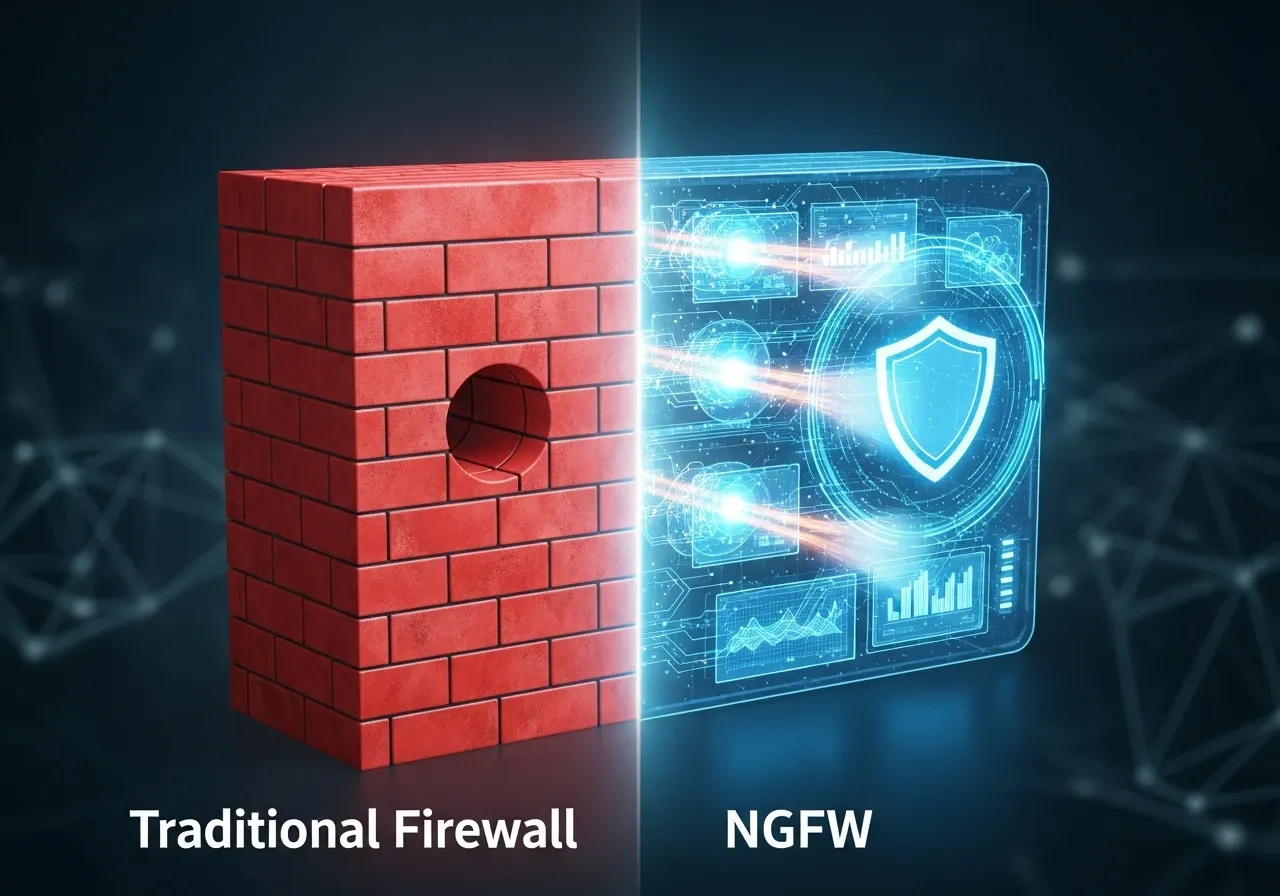Difference Between Next-Generation Firewalls (NGFW) Vs Traditional Firewalls
It’s quite surprising how many organisations still rely on firewalls that were built for yesterday’s threats, even though cyber attacks now leverage application-layer tunnels, encrypted payloads, and identity spoofing. As attackers are constantly innovating, simply older ways aren’t enough anymore. If you’re still relying solely on a classic firewall architecture, you’re putting trust in technology that was built for a different era. That’s why we are talking about “next-generation” firewalls, built for layers, context, and these evolving threat landscapes.

So, if you’ve ever asked, “What’s the real difference between the old guard and the new one?”, then today's discussion will definitely sharpen your understanding to make confident decisions.
What is a Traditional Firewall?
A “traditional firewall” is the classic network-security system that monitors incoming and outgoing traffic and enforces rules based on IP addresses, ports, and protocols, often performing packet filtering and sometimes stateful inspection. Functionally, it belongs to the network management domain of layers 3 (the Network and Transport layers) of the OSI (Open Systems Interconnection) model.
Advantages of a Traditional Firewall
- Simplicity: It’s simple to set up and manage because of fewer layers of complexity and straightforward monitoring.
- Cost-effective: Traditional firewalls generally cost less than more advanced solutions. It makes them appealing for small or less complex networks.
- Performance: As we know, the inspection is relatively lightweight, so the processing overhead is low, and throughput is high.
Disadvantages of a Traditional Firewall
- Limited Security: Traditional firewalls do not inspect application-layer behaviour, so they miss threats (malware or APTs) embedded in traffic that looks “normal” at the IP/port level.
- No DPI (Deep Packet Inspection): It meanstraditional firewalls typically do not examine the packet payload in depth. That restricts the ability to detect hidden threats.
- No Application Awareness: A traditional firewall can’t identify or control specific applications.
Upgrade to Smarter Security
Protect your network from modern threats with AI-powered filtering and advanced threat detection.
What is a Next-Generation Firewall?
A “next-generation firewall” (NGFW) is far more advanced than the traditional model, and also expands richly by adding application identification/control, deep packet inspection, intrusion prevention systems (IPS), and threat-intelligence integration. It operates across multiple layers (Layer 3 - Layer 7) and gives security teams better context.
Advantages of Next-Generation Firewall
- Advanced Threat Protection (via DPI, IDS/IPS, sandboxing): NGFWs inspect traffic deeply, even into the content of packets, decrypted SSL/TLS traffic when configured, scanning for malware, zero-day attacks, or anomalous behaviour.
- Application Awareness: NGFWs help you to recognise and control specific applications regardless of the port/protocol used.
- Unified Security: Rather than separate appliances for firewall, IPS, application control, and device identity, NGFWs often integrate many of these functions together. That can reduce separate hardware/software management.
- Identity Awareness: Besides mapping traffic by source IP, NGFWs can also associate user identities and apply policies based on individual roles or groups. That adds a new dimension of control.
Disadvantages of Next-Generation Firewall
- Price: Because of the added capabilities (application awareness, DPI, IPS, identity integration, threat intelligence), NGFWs are more expensive compared to traditional firewalls.
- Difficult to Manage: More features often lead to more complexity. Getting policy rules right, especially around applications, decrypted traffic, and user identity, takes time and expertise. So, for smaller teams, this can be a burden.
Difference Between Traditional Firewall and Next-Generation Firewall
| Feature | Next-Generation Firewall (NGFW) | Traditional Firewall |
| Operation Layer | Layers 3 through 7 (Network to Application) | Layer 3 (Usually Network Layer) |
| Threat Detection | Advanced – DPI, IPS, sandboxing, threat intelligence | Basic – known ports, IPs, simple rules |
| Awareness of Application | Yes, it can identify & control specific applications | No |
| DPI | Yes, inspects packet payload or content | No |
| Granular Control | High granularity: apps, users, content, context | Limited: coarse rules |
| Function | Advanced security: DPI, malware, IPS, application, user context | Packet filtering (IP address, port number) |
| IPS | Yes, IPS is integral to NGFW | No built-in IPS |
| User Identity Awareness | Yes, applies policies by user or role | No |
Secure Your Digital Future with a Web Application Firewall Solution in Dubai with the Help of Penieltech
If you’re operating in a region like the UAE and looking to layer advanced protection around web applications, working with Firewalls Distributors can help you a lot.
Replace Legacy Firewall Limits
Get real-time visibility, application control, and stronger cybersecurity with next-gen firewalls.
For example, at Penieltech, we specialise in deploying advanced firewall solutions, including NGFW platforms, tuned for local compliance, language norms, and regional threat landscapes.
Overall, it builds a stronger defence posture and gives you the peace of mind to focus on core business rather than security headaches.
